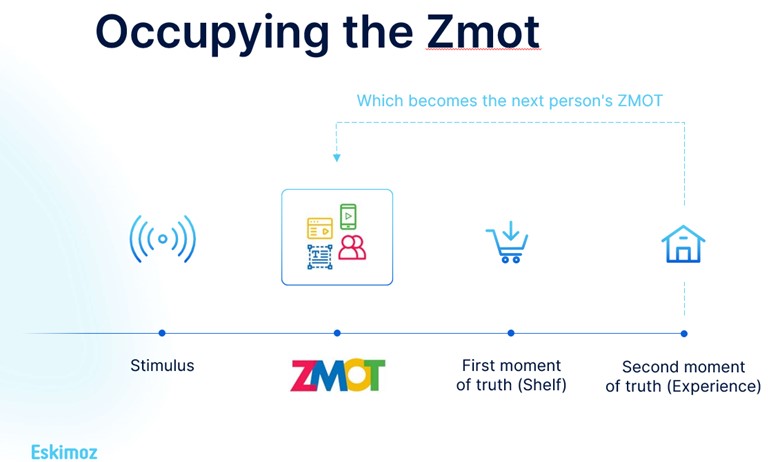Content marketing is a form of marketing that primarily involves enriching customers and putting their needs ahead of any product or service promotion.
It helps get prospects into the sales funnel, nudging them toward the bottom without being too “salesy.” It also helps to keep existing customers engaged and informed.
This means that every video, blog post, newsletter, social media post, tutorial, how-to guide, guest post, and podcast is to gain your audience’s attention without shilling them with your products and services.
For many companies, it’s an affordable online marketing strategy that requires minimal investments in ad spend. That’s not to say that content creation is free. Far from it!
About 73% of marketing professionals say their company spends about $3,000-5,000 (£2,350-3,920) monthly on content marketing.
In this article, we explore content marketing deeply, diving into its types and benefits, how it works, and, more importantly, how to get started and win against your competitors.
Overview of content marketing
In 2010, Google published a study, the Zero Moment of Truth (ZMOT). The study highlighted a pivotal juncture in the consumer buying process.

The authors found that 88% of shoppers research a product before buying it. That study brought to the fore the need to provide content that answers many of your audience’s research questions.
Consumers want to know how your product works, how other users interact with it, and its benefits. They are trying to see if their values and ethos align with the brand’s.
Per the content marketing definition by the Content Marketing Institute, creating “relevant and useful content” is at the heart of this approach.
In essence, content marketing is used to proactively provide answers to user research questions and intent during their buying journey using a variety of content types.
Furthermore, companies use content marketing to engage throughout the customer journey and beyond.
How does content marketing work?
The whole idea behind content marketing is trying to influence consumers to buy and continue buying.
Let’s work through a typical sales funnel: awareness, interest or discovery, consideration or decision, conversion or sales, and loyalty or repurchase or referrals.
Content marketing plays a pivotal role at each stage listed above. For example, you publish an article on the top 10 best scheduling software with your product inclusive.
With proper search engine optimisation (SEO), you rank first for the post on Google, and a customer visits your article. Now, they’re aware of your product as a suitable option for their needs.

At the end of the article, you invite them to watch a product demo (another content). They love it, but they still have some reservations. Then, plug your product name into social media and discussion websites like X (formerly Twitter) and Reddit.
They found user-generated content about how well your product works and its ease of use. So they make a purchase. They equally found it easy to set up and use, thanks to your carefully crafted and comprehensive tutorials and how-to guides.
They talk to other business owners in their circle about the fantastic product they use for scheduling and refer others to your product.
That’s a prime example of how content marketing works. You’ve moved an individual from one stage to the next through content marketing.
Types of content marketing
The types of content marketing include:
- Social media content marketing
- Blog content
- Newsletters
- Emails
- Podcast content marketing
- Video content…

What are the benefits of content marketing?
There are numerous benefits to creating blog posts, videos, newsletters, social media posts, guest posts, and podcasts. Here are some of the major ones:
Brings traffic and leads to your website
Web pages and blog posts optimised for user search intent will help you rank high on search engines, bringing potential customers to your website.
Of course, there’s still the need to offer a lead magnet for users to give you their contact details, but half the job is done once they’re on your website.
One successful blog can provide an endless stream of leads for your business, especially if you keep refreshing the post with new information.
Do you want to create content that converts? Eskimoz is a leading digital acquisition agency that can help you hone in on an original tone of voice and create content across multiple channels.
Establishes you as an authority in your industry
Creating useful content establishes you as an authority in your niche.
For example, many companies rely on Gartner’s Magic Quadrants to make technology decisions.
The Quadrant is a simple, research-backed report that segments technology solutions into “Leaders, Visionaries, Niche Players, and Challengers.”
Through this and other reports, Gartner has positioned itself as a leading “technological research and consulting firm.” Many other companies cite this research, which exposes the company to new audiences.
Builds a two-way relationship with your customers and target audience
Creating unique and compelling content, especially on social media platforms, is a great way to strike engaging conversations with your audience.
Spotify’s yearly wrap is a fantastic example of how to create engaging content that sparks conversations about your brand and products.

You can get their feedback on your products or services, ask for user-generated content, introduce them to another side of your brand, connect with them on a personal level, and much more.
Establishes your brand identity
Your brand is one of your competitive advantages. Content marketing can help you position your brand in how you want it to be perceived.
With the right content marketing strategies, tone of voice, type of content, choice of words, graphics, and colours, your brand personality can shine through your content.
Helps you build trust
We mentioned Gartner’s Magic Quadrants and how it established the company as an authority. But what stands out is the sound methodology behind all its reports.
Consistently publishing credible and helpful content helps you build trust with your audience and other brands. Leading companies will only cite your reports or blog if they’re factual and founded on sound methodology and logic.
Helps tell your story from your point of view
Successful content marketing strategies help you own your narrative. It puts you in the director’s seat of your story.
Customers don’t have to rely on third parties to know your brand, get tutorials on how to use your products, or for factual information about your brand.
Helps you gain backlinks to rank higher on search engines
Backlinks are one of the factors Google tracks to compile search results. High domain authority citing your work and website can help you rank higher on search results.
Helps push customers through your sales funnel
Target every content you create at one of the stages in the sales funnel by addressing the challenges users face.
A field services manager may be struggling with creating schedules, and your article about how scheduling software alleviates these issues creates awareness, while your article about the 10 best scheduling software will create potential interest in your product.
Your content marketing efforts should tie all content together in ways that move users from one stage of the funnel to another.
Steps to get started with content marketing
Here are the steps to get started with content marketing:
1. Define your brand identity
With the availability of multiple businesses and a highly competitive digital space, it’s more than necessary to have a strong, unique, and easily identifiable identity.
Every content you publish is an extension of your brand, so it’s important and necessary to sort your brand identity before creating content.
Some of the items that make up your brand identity include:
- Value proposition
- Mission, vision, and goals
- Brand personality (sassy, funny, professional, etc.)
- Logo
- Colours and type
- Fonts and form
You may employ the help of a branding and copywriting agency to help you polish your mission and vision statements and value proposition, articulating them in a way that addresses your audience’s pain points.
2. Identify your audience and their pain points
There are two core things research unearths for you: who your target audience is and their major pain points.
If you serve a broad audience, segment them into sub-groups and create content to meet the needs of each group. You may need to refine these sub-groups into buying personas.
It’s also important to know what each sub-group’s frustrations and challenges are so that you can craft content that shows how your product and services help them.
Ask yourself, “How will each content resonate with the segments you identified?”
Research could also include auditing your current content for quality, relevance, information gaps, and more. These are your low-hanging fruits.
While the goal is not to copy your competitors, running an SEO Competitor Analysis may show you gaps and opportunities you can explore for quick wins. You may also draw inspiration from your competitors’ content marketing examples.
3. Define your goals and KPIs
What do you seek to achieve with content marketing? Do you want to increase brand authority or create a pipeline of lead generation? You may want to improve customer retention or foster customer loyalty.
While you may have multiple goals at a time, it’s best to have a maximum of two that you prioritise. Then, set up key performance indicators to track progress and optimise as necessary.
4. Create an effective content marketing strategy and plan
This is where you tie everything together. Based on your goals, you decide on the type of content you want to create and how much resources it’ll require.
For example, you may prioritise creating a whitepaper or survey if you aim to build your authority in your industry. On the other hand, you may need to create blogs and then create a free ebook or tool to serve as a lead magnet if you plan to get leads.
For another business, the priority may be refining its website copy and updating all user resources before focusing on creating new content.
This stage also caters to distribution. Which channels are you creating content for, and what’s the appropriate format on these platforms? Are you using paid ads or purely pursuing organic traffic?
Do you have the resources for creating exceptional videos if video content will play a prominent role in your online content marketing strategy?
It’s important to realise your company’s limit in developing a content strategy. It may be more rewarding to hire a content marketing agency with experience and expertise to help create high-quality content that resonates with your audience, irrespective of the channel.
Lastly, create a content calendar. It makes everything easier. You can plan for two or three months and focus on execution from there.
5. Choose a content management system
A content management system makes it easier to “create, manage, and track your content.” Examples of CMS include WordPress, Hubspot CMS, Contentstack, Contentful, CMS Hub, and more.
6. Follow best practices
Follow best practices such as:
- Posting when you’re most likely to get the most views
- Speaking your audience’s language
- Using the appropriate and recommended dimensions and resolutions on each social media platform
- Bringing real value to your audience
- Taking SEO seriously
- Avoiding plagiarism and black hat tactics
- Collaborating with other brands
- Letting your experience and expertise shine through your content; Google likes this based on the E-E-A-T (Experience, Expertise, Authoritativeness, and Trustworthiness) model
7. Review and analyse results
Monitor progress on all your channels with analytics tools. Review what’s working and what’s not and make the necessary adjustments.

Takeaway: Boost your conversion rate with content marketing

A successful content marketing strategy, whether through creating a landing page, blogging or social media marketing, can help you frame your brand identity, establish yourself as an authority, connect with your audience, project legitimacy, and ultimately help you convert prospects to customers and customers to loyal fans.
Getting started with content marketing can be a painstaking affair, but the rewards are worth the effort.
If you don’t know where or how to start your journey, or you’ve started and become stuck, Eskimoz can help.
Eskimoz is an expert at creating high-quality content and equally magnifying it through SEO and paid media. Contact us today to get a free audit of your content pipeline.
FAQs
What is an example of content marketing?
When you write blog content, that’s an example of content marketing. The same applies to when you curate an email newsletter, create and publish YouTube or TikTok videos, and produce podcasts. It is, however, how you deploy them and the strategic objectives of each content that get results.
What is content marketing and SEO?
Content marketing and SEO refer to creating content and optimising them for search engines primarily by using keywords and anticipating and researching user search intent.












